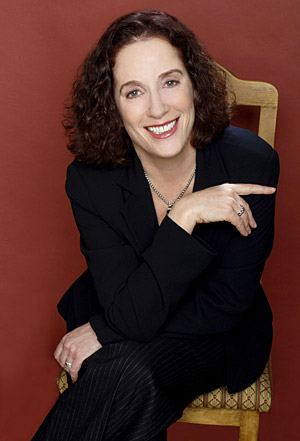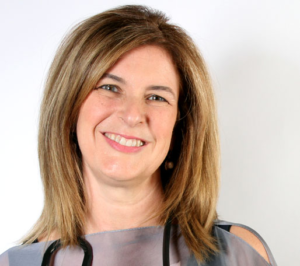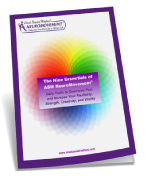The Center for Possibilities and Integrative Medicine
Anat Baniel Interviews Dr. Julie Reardon, Integrative Medicine Physician

I recently held an Anat Baniel Method® workshop in Austin, Texas: Transforming the Lives of Children with Special Needs. I met Dr. Julie Reardon, a workshop participant, and was taken in by her intelligence, open mindedness, vitality, and her incredibly positive disposition.
I was interested in finding out about Dr. Reardon’s experience and understanding of what was taught at the workshop, especially from her integrative medicine perspective. She found important parallels between Anat Baniel Method® NeuroMovement® and the Integrative Medicine approach which she enthusiastically told me about.
Below are some excerpts from my conversation with Dr. Reardon.
Six Commonalities Between Integrative Medicine and Anat Baniel Method® (ABM) NeuroMovement®
1. Interdisciplinary Collaboration and Continued Learning: Before attending the workshop, Dr. Reardon met two ABM NeuroMovement Practitioners (Ann St. Clair and Carole Keefe of Austin, TX) who told her about the method and gave her Ms. Baniel’s books. She said: “I loved what it was all about. The Anat Baniel Method fits with the approach that I have for medicine. I want to work collaboratively with different practitioners. Integrative medicine means integrating all sources of wisdom to get the right blend for each person. I wanted to know more about it, so I signed up for the workshop to learn more.”
2. The NINE ESSENTIALS and my LIVE IT approach are closely aligned: One of the first things that Dr. Reardon noticed was how well the Nine Essentials of the Anat Baniel Method fit with the approach that she has. She uses a LIVE IT approach to health and wellness (Learn, Incorporate, Vitalize, Exercise, Imagine, Think). She says, “Anat inspired me to further my LIVE IT approach to health and wellness, as it also utilizes the learning power of the brain and the body. We need to nourish our bodies and our brains. Blended within the integrative medical world I see (using nutrition, mindfulness, medical support when needed, and spirituality), the nine essentials beautifully connect the body with the mind.”
3. NeuroMovement® plays an important role in brain plasticity: The workshop also really reinforced what Dr. Reardon already knew about neuroplasticity and how the brain develops. She describes her experience: “I especially liked how Anat implemented her approach, the ways in which she taught people how to use their bodies to help their brains, and vice versa. It reinforced a lot of what I feel that I have encountered in my life and career so far. At times, Anat put it in a whole new language for me.”
4. “Center for Possibilities” vs. “Office of Limitations”; being open to possibilities will bring a positive approach to health and healing: Dr. Reardon notes that the workshop also reinforced a positive approach to health and healing, which she thinks that doctors in allopathic medicine do not always have. That’s why she’s attracted to integrative medicine. She shares: “I was especially moved by a video clip of a mom of a special needs child sharing some of her journey. This mom clearly illustrated the ‘downer’ it was to go visit the neurologist with her son, and described it as being the ‘office of limitations.’ Instead, while working with the ABM practitioners and the approach taught by the Anat Baniel Method, she said it was like coming to the ‘center for possibilities.’
This hit home because in my allopathic medical training we are so trained to be ‘objective’ and ‘evidence-based’ that we often don’t leave room for possibility or being outside the box. I like Anat’s approach in that sometimes our greatest asset is that you don’t have an idea of what’s not possible. I found this very freeing!”
5. Tomorrow’s science may change: Dr. Reardon has done a lot of work on physician wellness and she’s hoping to write a book about this topic someday. She says, “Physicians enter medicine with hopes and dreams of ways to help people. And then we have these statistical facts drilled into us, so much so that we get stuck on what’s not possible. We may end up limiting people and outcomes by what our scientific understanding leads us to think we know today. But tomorrow the science may progress and change, and so will our knowledge, understanding, and beliefs of what’s possible. And it’s important to recognize this.”
Anat’s work is based in neuroscience and other aspects of science that not too long ago were considered invalid or not considered at all. Some of the hot topics in medicine now include genetics and the work with telomeres, and many other things…things that seem so distant from the work that Anat is doing and yet I see it blend together beautifully. It’s just exciting to look at it this way and to have the tools that she offers which really help move the brain, and as a result the body and the whole person, towards a place of healing.”
6. Yoda was right. “There is no try, only do.”: Dr. Reardon liked the personal nature of the workshop; how every person was able to experience the movements in themselves and the impact of their participation. She also notes: “The workshop focused on the information that we give our brains. Anat explained that often when trying harder to do something we can’t do, we deepen the neural pathways of our limitations. We can’t try harder for something we can’t do! You don’t get people to do what they can’t. But in fact our education and healthcare systems often encourage this and set us up for failure and frustration.”
Dr. Reardon told me that she is committed to putting the knowledge she learned in this workshop to good use in her practice. She summarizes her experience with the Anat Baniel Method as follows:
“Even in one day of experiencing the movement lessons and listening to Anat, it helped to reinvigorate what I try to do daily with my patients, which is help them to create healthy cycles and healthy habits. Habits are hard to change and it feels risky to do so. Change requires deliberate attention in all aspects of our wellness.
This approach resonated with my father’s favorite saying: ‘If you always think the way you always thought, you’ll always get what you always got.’ As Anat said, we need to pay attention to what is new and what we want to change. It does not need to be painful. In fact, if there is pain, we naturally avoid those pathways. Anat says that ‘the job of the brain is to create order out of disorder and make sense out of the nonsense. The brain needs new information to do something new.’ We will change those neural pathways if we use this method.
Anat’s approach, in meeting people where they are at, also resonated personally for me in a couple of ways. Sometimes, with our medical labels, we take away human dignity and I feel that her approach restores that in a way that I really value. And I know that I will also use what I learned as a mom in how I approach and motivate my children as their brains develop further.
Above all, Anat reminded me to embrace the miracles all around me every day. I celebrate that my medical practice is an office for possibilities!”
 About Julie Reardon, MD
About Julie Reardon, MD
Julie Reardon practiced family medicine for over 13 years in southwest Washington. After practicing in New Zealand for a year, she recently relocated and is now an integrative family medicine physician with a private practice in Austin, TX. Dr. Reardon completed the Fellowship in Integrative Medicine, created by Andrew Weil, MD, in Arizona.
Learn more about Julie Reardon, MD, at www.laketravisintegrative.com or contact her office at 512-850-6963.



